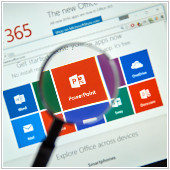It’s normal for us to utilize whatever tools we can to make things a little easier. Wanting to use tech to make presentations easier to understand is no exception. Although Microsoft PowerPoint can help you through the daunting task of speaking in public, that isn’t always the case. If your slides distract the audience from […]
 It’s normal for us to utilize whatever tools we can to make things a little easier. Wanting to use tech to make presentations easier to understand is no exception. Although Microsoft PowerPoint can help you through the daunting task of speaking in public, that isn’t always the case. If your slides distract the audience from what you’re trying to say, or if they decide to throw a technical fit and malfunction half-way through, it’s best that you take a look at the following tips:
It’s normal for us to utilize whatever tools we can to make things a little easier. Wanting to use tech to make presentations easier to understand is no exception. Although Microsoft PowerPoint can help you through the daunting task of speaking in public, that isn’t always the case. If your slides distract the audience from what you’re trying to say, or if they decide to throw a technical fit and malfunction half-way through, it’s best that you take a look at the following tips:
Start slideshows instantly
The audience doesn’t want to see the speaker’s cluttered desktop or unread emails as the PowerPoint presentation is being set up. Simply name the file with a .PPS or .PPSX file extension and voilà! Bypass the editing mode and start the show with a double click and end it with the Esc key.Pull back the focus with Blackouts and Whiteouts
Audience members have the tendency to lose focus or drift away when presentations are longer than usual. If you suspect audience members are starting to lose focus, hit the B key for a complete blackout or the W key for a total whiteout. Then hit any key or click the mouse to return to the slides - this technique helps get the eyes back on you, where they belong.Say no to bullet points
Both Steve Jobs and Tim Cook agree that bulleted lists aren’t the ticket. A better way to create lists is to drop each item in one at a time, if possible, next to a big image that is the main focus of your presentation. Don’t forget to talk about each individual list item, but not with bullets.Insert pictures from Flickr and OneNote
Jazz up presentations by including images or memes that’ll make the audience laugh instead of doze off. Head to the Insert tab and select Online Pictures; you’ll see Office.com Clip Art, Bing Image Search, Flickr, OneNote and even Facebook. The vast pool of online imagery is now at your disposal.Chart animation
The challenge doesn’t lie in inserting the chart into the presentation, but in making it interesting. Enter chart animation. After inserting the chart, click the Animations tab and activate the Animations pane. From there, click Add Animation. Pick an animated effect. Then, in the Animation Pane where you see the entry for the chart's animation, right click and select Effect Options.This lets you customize sound and animation timing. But on the final tab—Chart Animation—be sure to change Group Chart from "As One Object" to "By Category." This makes charts display on screen one element at a time as you click, with bars or pieces of pie arriving one after the other, as if each was its own slide.
